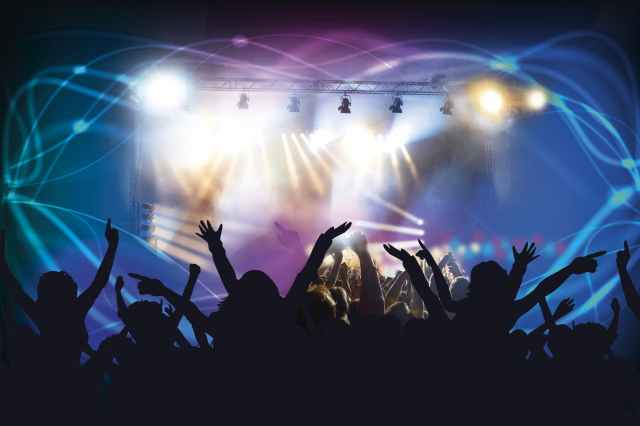
Sociology and the Homosexuality Issue
The beauty of sociology as an academic discipline is that it always aims to be objective and value-free in its judgment about human behavior and social issues.
Unlike Ethics, Theology, and other normative disciplines, sociology does not pass moral judgment on behavior issues, whether they are good or bad, using certain religious or ethical standards. It does not see homosexuality as moral or immoral, but as a social phenomenon that needs to be understood empirically.
Sociological knowledge is descriptive and not prescriptive. It does provide normative recommendations on how specific social reality should be treated or judged. Instead, it merely provides data or scientific findings from research concerning a particular behavior or social issue.
With regard to gays and lesbians, sociology does not immediately condemn homosexuals as deviant or immoral. It merely does research on the nature of homosexuality or lesbianism and describe why gays and lesbians are different from heterosexuals and discriminated in society. It does not provide anti-gay or anti-LGBT pronouncements when analyzing certain beliefs or misconceptions on gays and lesbians.
Difference between Sex and Gender
Being gay or lesbian is a gender issue. But before one can appreciate the distinct life of gays and lesbians or any member of the LGBT community, s/he must differentiate the concept of sex from gender. Sociology distinguishes sex from gender.
Sex refers to the biological make-up of the person. Thus, if one fills up a demographic question on sex in a survey, s/he either answers it as male or female. Sex primarily refers to the person’s biological traits. His/her sex organ becomes the indicator to answer this question on sex.

Gender, on the other hand, is the cultural meanings attached to being masculine and feminine. It refers to the person’s social and sexual orientation. It is a cultural construction. This concept is not based on the biological make-up of the person, but on how s/he is socialized by society as a human being, how s/he expresses her/his humanity and sexual preference. Gender is a social construct made by people in society.
Traditionally, there are only 2 ways of becoming human: to be masculine or feminine. But empirically, this is false. Heterosexuality is not the only way of life people follow in society. There are really people who cannot be classified according to the heterosexual categories of masculinity and femininity. Lesbians, gays, bisexuals, and transgenders belong a different category, thus they form a community called the LGBT.

As early as the birth of humanity, there are already gays and lesbians. The Old Testament too affirm the existence of gays and lesbians before the birth of Christ in the story of Sodom and Gomorrah. There are really persons who are socialized in society not to be completely straight or heterosexual. People must accept the fact that there are other ways of becoming human. They just have to respect the LGBT as real human beings living a normal life like the heterosexuals.
Being gays and lesbians is not only a matter of sexual orientation. It is, above all, a way of life different from heterosexuality, maybe a sort of a hybrid between masculinity and femininity, and something else. Gays and lesbians live different lifestyles with world views and values which cannot be judged or assessed according to the criteria used by straight people. There are even variations in lifestyles among gays and lesbians that need further research because they are misunderstood by heterosexuals. Thus, it is ethnocentric or “self-centered” if the homosexual lifestyle of gays and lesbians is judged according to the traditional heterosexual norms. Some data from a US survey showed that gays, lesbians and members of the LGBT community still comprise a minority of society’s population. Being minority group, the LGBT can indeed be susceptible to discrimination and bullying.
Some Facts (Gates, April 2011):
1. An estimated 3.5% of adults in the United States do not consider themselves as heterosexual. Instead, they identify themselves as either lesbian, gay, or bisexual. Moreover, an estimated 0.3% of adults consider themselves as transgender.
2.There are approximately 9 million LGBT Americans, a figure roughly equivalent to the population of New Jersey.
3. Among adults who identify as LGB, bisexuals comprise a slight majority (1.8% compared to 1.7% who identify as lesbian or gay).
The discrimination of gays and lesbians is usually supported by myths and misconceptions about their personality and lifestyle. Thus, removing these false beliefs from people’s minds can be a big step to liberate the LGBT from unjust labeling and discrimination. Here are some of the top misconceptions concerning gays and lesbians:
1. Homosexuality is biological: Being gay and lesbian is inborn.

This one of the biggest misconceptions about gays and lesbians in the LGBT community–that one is born to be gay or lesbian. Biologically speaking, only hermaphrodites are born with 2 sex organs, but they do not necessarily become gays or lesbians when they grow up. Research studies show that homosexuality is a socially learned behavior in society, not an inborn trait. It can even be contingent or passing in abnormal situations such as homosexuality in prison or all male-dorms. One must distinguish homosexual acts from homosexual personality.
2. Gays and Lesbians are by definition a psychological problem.

Members of the LGBT community, like most heterosexual people, do not have psychiatric diagnoses. “Many anti-gay rights activists claim that homosexuality is a mental disorder caused by some psychological trauma or aberration in childhood. This argument is used to counter the common observation that no one, gay or straight, consciously chooses his or her sexual orientation (Schlatter & Steinbeck, 2011).” There is nothing inherently pathological about being gay, lesbian or bisexual. Homosexual as well as bisexual orientations are normal variants of human sexuality. It is a way of becoming human that is different from heterosexuality and must be recognized by people.
2. Gays and lesbians cross dress.

Not all lesbians and gays cross dress. Some gays wear men’s clothes or lesbians wearing women’s dress. But cross dressing is not only done by gays and lesbians. Cross dressing is more common than many realize, although often done in secret since it is considered deviant by society (e.g., female panties worn underneath man’s pants or man’s briefs underneath a woman’s dress).
It is a myth to believe that all cross dressers are homosexual or bi-sexual. There are many cross dressers who are heterosexual men. It is those men who report they enjoy the feel of women’s clothes, the excitement of pushing the limits of societal acceptance, and/or enjoy the feel of risk taking (e.g., they could be caught) (Ruski, 2013).
It is more likely the media and TV shows and gay pageants that present gays in women’s clothes that made people think that all homosexuals cross dress.
3. Gays and lesbians are promiscuous.

Promiscuity or having different sexual partners is not only limited to gays and lesbians or any members of the LGBT community. Heterosexuals or straight people are promiscuous. It fact, they constitute the majority of promiscuous people since only small percentage of the population are members of the LGBT community. Many gays and lesbians are monogamous or who live one partner at a time or all the time. Some are even happily married in countries or states that recognize same-sex marriage.
4. Lesbians and gays can’t be religious.

There are still churches which are anti-gays or anti-lesbians. The biblical exhortation that homosexuals cannot enter the Kingdom of heaven often makes people think that gays and lesbians are immoral and non-religious. But this is a myth. There are many gays and lesbians who are religious, both privately and publicly. Some are even active in their respective church activities and public rituals, or even become ministers. Like the heterosexuals, gays and lesbians are also called by God to serve Him.
5. Gays and lesbians become homosexual because they were sexually abused as children or there was a deficiency in sex-role modeling by their parents.

Many anti-gay rights activists claim that homosexuality is a mental disorder caused by some psychological trauma or aberration in childhood. But there is no scientifically sound study that definitively linked sexual orientation or identity with parental role-modeling or childhood sexual abuse.
The American Psychiatric Association in 2000 fact sheet on gay, lesbian and bisexual issues, for instance, claimed that sexual abuse does not appear to be any more prevalent among children who grow up and identify as gay, lesbian or bisexual than in children who grow up and identify as heterosexual (Schlatter & Steinbeck, 2011).
Final Words

Due to the increase of sociological and empirical studies on the life of lesbians and gays, more and more people have become accepting of homosexuality as a distinct way of life in society that cannot be examined using the heterosexual standards on how to become human. A 2013 Pew Research survey on the LGBT community showed that 92% of the respondents believed society had become more accepting today of the LGBT than 10 years earlier. The research center also found out that the percentage of adults in the United States who believed that society should accept homosexuality has increased from 51% in 2006 to 62% in 2014 (Pew cited in Masci, 25 Sept 2014).
Sociology as a scientific discipline respects cultural diversity. Lesbians and gays are normal human beings in society. They only become deviants or “abnormal” if people start to judge their personality and lifestyle according to heterosexual standards–if people would insist that gays and lesbians should think, feel, and behave like straight individuals. It’s time to sing the Beatles’ song “Let it be”: “Whisper words of wisdom, let [them] be…”



